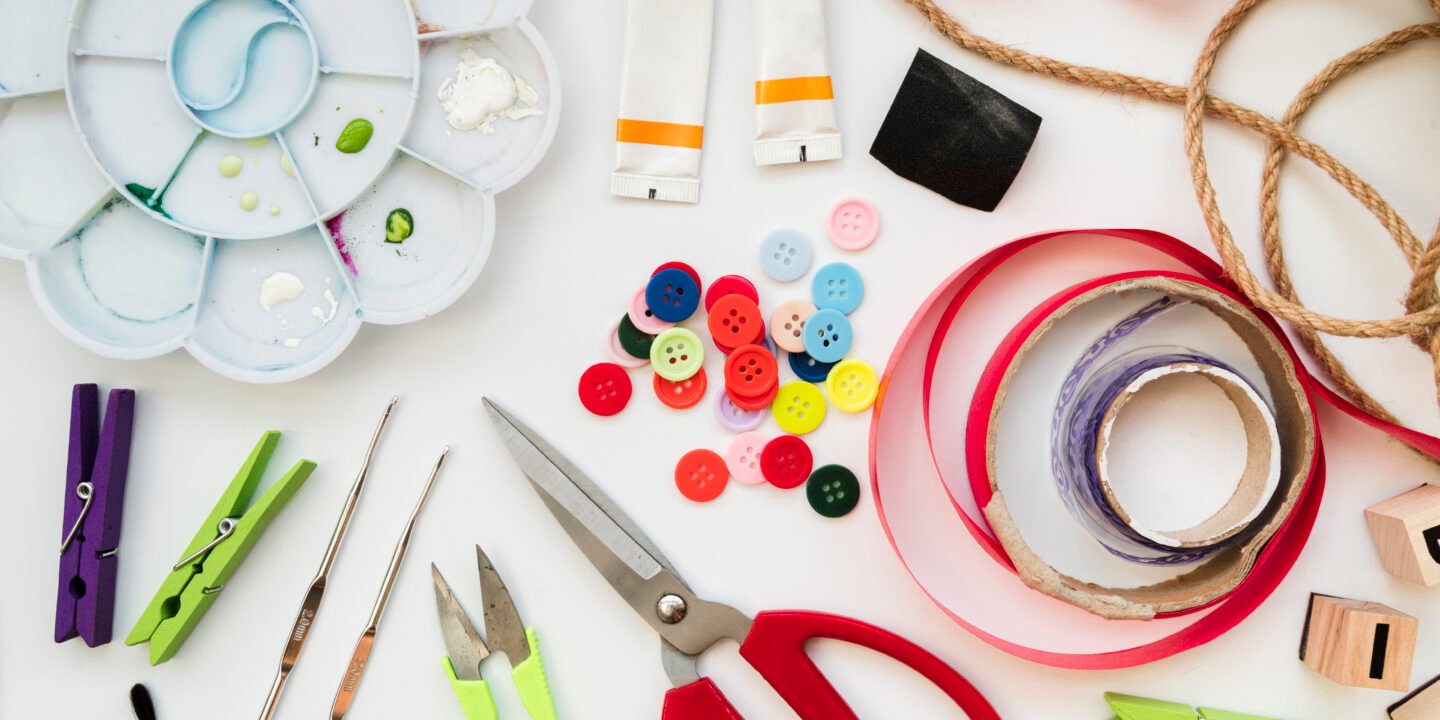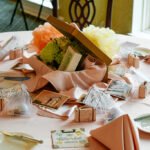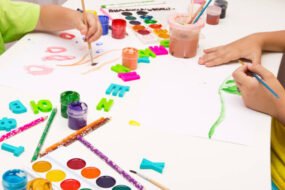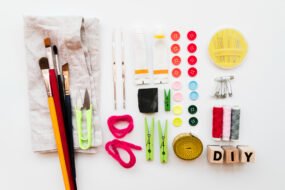
In today’s fast-paced world, where we are constantly bombarded with work, social media, and endless responsibilities, it’s essential to carve out time for ourselves to relax, recharge, and nurture our creativity. One of the most fulfilling ways to do this is through crafting and hobbies. Whether you’re looking for a therapeutic escape, a new skill to learn, or a way to create beautiful, handmade items, there are a variety of craft-based activities that offer both joy and relaxation. In this post, we’ll explore ten of the best crafts and hobbies that can help you unwind, enhance your creativity, and discover a deeper sense of fulfillment.
1. Knitting and Crochet: The Art of Stitching Peace
Knitting and crochet are both timeless crafts that have been enjoyed for centuries. While they may seem simple at first, they offer endless opportunities for creativity, skill-building, and relaxation. The rhythmic motion of knitting or crocheting can have a calming effect, making it an ideal activity for those looking to reduce stress and unwind.
- Knitting involves creating fabric by interlocking yarn with needles. Whether you’re making scarves, blankets, or even intricate garments, knitting can be a meditative practice that helps slow down your mind. Beginners can start with basic stitches like garter stitch or stockinette, while more advanced knitters can explore lace patterns or cables.
- Crochet is similar but involves using a single hook to pull yarn through loops to create fabric. Crochet projects tend to be quicker to complete than knitting, which makes it satisfying for those who like to see results quickly. You can crochet everything from decorative items like flowers to functional pieces like dishcloths or blankets.
Both knitting and crochet have the added benefit of being portable—making them perfect for travel or a quiet evening at home.
2. Painting and Drawing: Express Yourself Through Art
If you’re looking for a more visual form of creativity, painting and drawing can be incredibly therapeutic. These activities give you the freedom to express your emotions, ideas, and imagination. It’s not about being perfect but about letting your thoughts flow onto the canvas or paper.
- Watercolor Painting is a fantastic medium for beginners and advanced artists alike. It’s forgiving, with its soft washes of color that blend together beautifully. Whether you’re painting landscapes, portraits, or abstract designs, watercolor allows you to experiment with different techniques—such as wet-on-wet or dry brush—to achieve stunning effects.
- Acrylic Painting is another popular medium, and it’s often seen as more versatile and forgiving than oil paints. Acrylics dry quickly, which makes it ideal for those who want to work on a project in one sitting. You can create vibrant, textured pieces, from bold landscapes to expressive portraits.
- Drawing with pencil, charcoal, or ink is a more straightforward way to start creating art. Drawing is one of the best ways to hone your observational skills and build fine motor control. Even if you’re not an experienced artist, you can start with basic sketches or doodles and slowly build your confidence.
Whether you’re exploring a relaxing watercolor sunset or drawing intricate patterns, painting and drawing allow you to escape into your own world and discover a deeper sense of self-expression.
3. Scrapbooking: Capture Memories in a Creative Way
Scrapbooking is a craft that involves compiling photographs, mementos, and decorative elements into a beautifully crafted album. It’s not just about keeping memories—it’s about expressing your unique perspective on those memories. Scrapbooking combines artistry with sentimentality, offering a perfect outlet for reflection and creativity.
You can use a variety of materials for your scrapbook pages: patterned paper, stamps, stickers, embellishments, and even fabric or pressed flowers. Each page you create becomes a visual representation of a memory, whether it’s a family vacation, a milestone birthday, or just a quiet moment with friends.
The beauty of scrapbooking is that it offers endless possibilities. You can create themed pages, experiment with layouts, and even use mixed media techniques. Scrapbooking is also a social activity—many people enjoy joining scrapbooking communities or organizing crafting nights with friends.
4. Calligraphy and Hand Lettering: Master the Art of Beautiful Writing
Calligraphy and hand lettering are wonderful hobbies that focus on the beauty of words. With the rise of digital communication, the art of writing by hand has become a lost craft, but it’s making a comeback as more people embrace the therapeutic and creative benefits of calligraphy.
- Traditional Calligraphy involves using a dip pen and ink to form letters in an elegant, flowing style. It requires patience, practice, and precision, but the results are often stunning and worth the effort. You can use calligraphy to create personalized gifts, invitations, or home decor items like inspirational quotes.
- Hand Lettering, while similar, often incorporates more modern, casual styles of writing. It’s less focused on specific rules and more on creating expressive, decorative letters that fit a particular theme or mood. With the rise of social media platforms like Instagram and Pinterest, hand lettering has gained popularity, and there are plenty of tutorials and resources available to help you get started.
Both calligraphy and hand lettering provide a creative way to slow down, focus, and engage in mindful activity. They also allow you to create meaningful art from something as simple as a word or phrase.
5. Jewelry Making: Crafting Wearable Art
Jewelry making is a wonderful hobby that combines creativity, craftsmanship, and even a bit of engineering. Whether you’re working with beads, wire, clay, or metal, you can create stunning, one-of-a-kind pieces that reflect your personal style. Jewelry is a craft that’s accessible for all skill levels, with simple projects like beaded bracelets and more complex ones involving wire-wrapping or metalworking.
- Beadwork is one of the easiest ways to start making jewelry. You can create necklaces, earrings, or bracelets with beads in different colors, shapes, and sizes. The possibilities are endless, from minimalist designs to intricate, statement pieces.
- Wire-Wrapping involves bending and twisting wire to create detailed patterns and settings for stones or beads. This technique adds a more professional touch to your jewelry-making projects.
- Polymer Clay Jewelry has become increasingly popular in recent years. Polymer clay is easy to work with, versatile, and can be baked to harden into solid pieces. You can create earrings, rings, necklaces, and other accessories with polymer clay in endless shapes and colors.
Making your own jewelry allows you to wear your creativity every day, and it’s a satisfying process that results in beautiful, functional art.
6. Pottery and Clay Sculpting: Mold Your Imagination
Working with clay is one of the oldest and most meditative crafts around. Whether you’re using a pottery wheel or hand-building sculptures, clay offers an incredible tactile experience that can be both therapeutic and deeply creative.
- Pottery involves shaping clay on a wheel and then firing it in a kiln to create functional items like bowls, mugs, and plates. It’s a rewarding craft that allows you to create personalized, handmade pieces that can be used every day.
- Clay Sculpting involves molding clay into various forms, from small figurines to larger, more intricate sculptures. This craft allows you to tap into your creativity and create three-dimensional artwork that can be painted or glazed.
Whether you’re making useful pottery or artistic sculptures, working with clay is a tactile and grounding hobby that encourages mindfulness and relaxation.
7. Gardening: Cultivate Nature’s Beauty
Gardening is not only a physical activity but also a deeply meditative practice that connects you with nature. Whether you have a small balcony garden or a sprawling backyard, tending to plants and watching them grow can be incredibly rewarding. Gardening provides an opportunity to slow down and appreciate the natural world, while also fostering a sense of accomplishment as you nurture your plants.
- Indoor Gardening is ideal for those with limited space. You can grow herbs, succulents, or small flowering plants right in your home. It’s a wonderful way to add some greenery and natural beauty to your living space.
- Vegetable and Herb Gardening offers the added benefit of growing your own food. Planting a vegetable garden can be a fun and educational hobby that teaches patience and sustainability. You can grow anything from tomatoes and peppers to leafy greens and herbs.
Gardening not only brings nature indoors but also helps reduce stress and improve mental well-being.
8. Sewing and Quilting: Crafting Fabric into Art
Sewing and quilting are both practical and creative hobbies that allow you to turn fabric into functional and artistic creations. These crafts can range from simple home projects like pillowcases or tote bags to intricate quilts or garments.
- Sewing involves using a needle and thread (or sewing machine) to stitch pieces of fabric together. Beginners can start with simple projects, such as creating a cushion cover or hemming clothes, while more advanced crafters can explore garment making or tailoring.
- Quilting involves sewing multiple layers of fabric together to create a thicker, padded material. Quilts are often made up of small squares or patches of fabric, which are sewn into a beautiful, intricate pattern. Quilting requires patience, but it’s incredibly rewarding when you see the finished piece.
Both sewing and quilting provide endless possibilities for creative expression and allow you to make custom home goods, clothing, and accessories.
9. Upcycling and DIY Home Decor: Transform Ordinary Items into Treasures
Upcycling and DIY home decor are perfect hobbies for those who love crafting with a purpose. This creative practice involves repurposing old or discarded items into something new and functional. Whether it’s turning an old ladder into a bookshelf or transforming fabric scraps into wall art, upcycling allows you to create unique pieces while helping the environment.
You can experiment with different materials such as wood, metal, fabric, and plastic to give new life to everyday objects. It’s also a great way to add a personal, homemade touch to your living space.
10. Origami: The Art of Paper Folding
Origami is the Japanese art of paper folding, and it offers a fun, inexpensive, and highly creative way to spend your time. You don’t need special tools—just a piece of square paper—and you can create intricate, beautiful designs ranging from simple cranes to complex flowers and animals.
Origami encourages precision, patience, and problem-solving skills, making it a great mental exercise as well as a relaxing hobby. The satisfaction of turning a flat sheet of paper into a three-dimensional object is both rewarding and meditative.
Final Thoughts
Crafting and hobbies are wonderful ways to nurture your creativity, reduce stress, and develop new skills. Whether you’re knitting a scarf, painting a canvas, or upcycling furniture, these activities provide a fulfilling escape from the demands of daily life. They allow you to tap into your creative potential, express yourself, and create something beautiful with your hands.
So, why not take some time today to start exploring a new hobby? You’ll be surprised at how enriching and enjoyable it can be.








